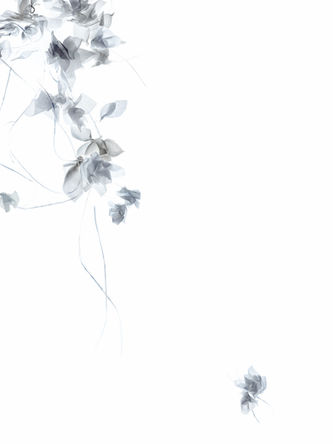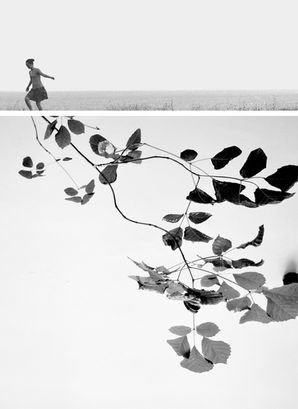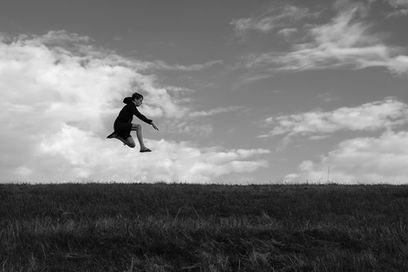
BARE ESSENTIALS
April 22, 2022
INTERVIEW
PHOTOGRAPHY Shira Gold
INTERVIEW Melanie Meggs
As the Covid-19 pandemic unfolded, the world experienced a collective sense of insecurity and uncertainty. With changes to our everyday lives felt all around us, Vancouver based photographer Shira Gold was driven to examine the psychological and economic effects the pandemic had on consumerism and our behavior.
Through her project BARE ESSENTIALS, Shira captures the essence of these fleeting moments, exploring how our relationship with mundane objects has shifted during times of crisis and uncertainty. With a focus on still life and landscapes as metaphors for themes common to us all, Shira’s photographs provide visual respite and a means to focus on intention and simplicity.
By deconstructing and digesting the experiences that shaped us during this time, BARE ESSENTIALS shows us how we have adapted in order to survive, as well as holds up a mirror to reflect on the effects that our behaviors have on our environment. In this article for The Pictorial List, Shira takes us back to the beginning of the pandemic to discuss her project and how it has helped her to explore art's intersection with mental health and well-being.

“In this series, I created conceptual portraits of utilizing these banal commonplace items made valuable through the threat of scarcity — manipulating their form to visually convey their meteoric metamorphosis into often elusive objects of desire. As they seemingly drift through the frame suspended in light - their beauty is ephemeral, undermined by the realization of their functionality, effect on daily life and the environment. The images take on a spectral and slightly ironic quality, calling attention to the dependence on single use goods, supply chain and the newly emerging consumer hierarchy exposed during the early days of the pandemic. These are the ‘bare essentials’ of our private lives.”
IN CONVERSATION WITH SHIRA GOLD
THE PICTORIAL LIST: Shira please tell us about yourself?
SHIRA GOLD: I was born and raised in Vancouver, Canada, a city surrounded by temperate rainforests, the Pacific Ocean, and incredible mountains. The city is a convergence of multiple cultures, tourism, outdoor adventure and a ton of film-making. Although I have lived in short fits and spurts elsewhere, Vancouver is my home. It’s where I work and live… a constant source of inspiration.
TPL: What draws you to photography and art? How did your journey into photography begin?
SG: My mother was an administrator at Arts Umbrella a visual and performing arts school for young people and had a great many creatives as friends, so I was raised around art and artists. I attended Arts Umbrella several days a week and explored a variety of art forms. When I was 11, I began taking darkroom photography. After just a few weeks I knew that photography was a way to articulate my internal voice and sensed it would become a vital part of shaping my world. In a word the experience was magical. To have found such a profound form of self-expression at that age felt like the greatest gift imaginable. It can be a bumpy road to growing up and having a camera to use as armour, and also as a means to engage with others, was incredibly important for an introverted extrovert like myself. When I had my camera with me, I felt fearless.
In looking back at those early years experimenting with the camera and in post, it’s interesting to see that my aesthetic was already being formed. There were nods to minimalism and negative space, experimentation printing on mixed media, and compositions that involved multiple exposures both in camera in in the darkroom. Today, I am realizing my childhood dream and have a studio on Granville Island (one of the jewels of Vancouver) right across from the front door of Arts Umbrella, the school that introduced me to my future. I share the space with one of the most motivated and positive artists I know, abstract painter Amy Stewart @amystewart…full circle…full heart.
TPL: Introduce your series BARE ESSENTIALS to us. How and why did this first manifest for you? What is the full story behind the project? What was the inspiration?
SG: The initial months of the pandemic, when we were told to live and work within the confines of our homes, was a period where I took inventory of my life. I used the time to reflect on my priorities as a person and consider the importance of contributing good to the world. When I make art, I most often utilize narratives from my life as a catalyst. “Bare Essentials” was born from reflection on my fears of Covid personally and its impact on the community and the environment. I was incredibly moved by how the often-invisible essential workers faced the risks each day to maintain the supply chains and keep producing to keep food on our shelves in the midst of such chaos. I learned in these moments the importance of recognizing everyone for what they contribute to society.
In the spring of 2020, after multiple unsuccessful hunts for ever-elusive essential goods, I humbly turned to online ordering of toilet paper, disposable masks and hand sanitizer. The oversized box arrived with much anticipation. Opening with delight, the relief was short-lived as reality hit – each item carefully wrapped in bubble-wrap, an almost comedic and devastating visual commentary of early pandemic times. I kept the packaging as a reminder of my contribution to the environmental impact of the pandemic and how I succumbed to the culture of fear driven consumption. Reflecting back on these moments informed and shaped the body of work BARE ESSENTIALS.
The collection of composite still life imagery in BARE ESSENTIALS interrogates patterns of human behavior and consumerism as they were affected by Covid-19 in North America. Prior to the world being upended by the pandemic, everyday products such as toilet paper, paper towels, tissues, masks and other disposable goods were generally assumed to be in endless supply with little awareness of the complex systems that deliver them to retail. As the world shut down, these basic items suddenly became scarce, panic purchasing ensued causing goods to fly off the shelves often into the homes of those hoarding against imminent disaster. This abrupt shift in purchasing habits laid bare several uncomfortable truths about our culture of consumption while shining a light on the vital work of vulnerable workers tasked with creating manufacturing and distributing items for our basic comfort.
In this series, I created conceptual portraits of utilizing these banal commonplace items made valuable through the threat of scarcity — manipulating their form to visually convey their meteoric metamorphosis into often elusive objects of desire. As they seemingly drift through the frame suspended in light - their beauty is ephemeral, undermined by the realization of their functionality, effect on daily life and the environment. The images take on a spectral and slightly ironic quality, calling attention to the dependence on single use goods, supply chain and the newly emerging consumer hierarchy exposed during the early days of the pandemic. These are the ‘bare essentials’ of our private lives.
TPL: Talk to us about your method of working and experimentation before the final image. Did you know exactly what you wanted from the beginning? How long did each image take to create?
SG: I have always worked a bit like a ‘mad scientist’, experimenting with new materials and new methods. How I go about realizing the final concept is often a messy and playful experience, which is a juxtaposition from post where everything is very precise and particular. My approach to creating work has never been linear, however the materials I ultimately use to convey the messaging in my series are always clear. I couldn’t guess how long each piece takes but there is generally a lot of revision. I most often work on multiple pieces at a time as I find it helps me not over work individual images and it tend to help me with eye fatigue. I will say that for as much as my art is rooted in minimalism, my work is deceptively time consuming.
TPL: Does your project "Bare Essentials" differ from your previous work? Is this type of visual storytelling something you would like to pursue again in future projects? What do you think is your next chapter in your exploration with future projects?
SG: BARE ESSENTIALS is a natural progression from my previous series THE FINE ART OF LETTING GO where I used mostly simple materials and found objects - combining them to tell a story. I think each series I have made relies heavily on visual metaphors and most often involves composite images. In “Bare Essentials” I evolved to incorporated scanography (utilizing flatbed scanners) along with traditional photography and light boxes as alternative light sources in my compositions. The materials I used were toilet paper, disposable masks, hand sanitizer, facial tissue, paper towel and plexiglass.
I think my art will always be tied to my personal observations and experiences, and the stories flow naturally. I have just recently completed a new series entitled “By a Thread” which also incorporates photography and scanography, and I am gradually developing a series about neurodiversity…a body of work I have been cultivating for the last few years.
My art is alert to the discomfort we all face in our daily lives and I want to turn pain and angst on its side to discover the beauty that accompanies our struggles.

TPL: Do you have any favorite artists or photographers you would like to share with us, and the reason for their significance?
SG: Yukari Chikura’s work is profoundly moving, quiet, and powerful. She created a book entitled “Zaido” based on her documentation of the 1300 year old Japanese ritual by the same name. Yukari lost her father (something I can relate to as I lost my Mother at 26) and he came to her in a dream urging her to go to the village where he had lived a long time ago. The work documents her pilgrimage.
I love the work of Ingrid Weyland. Her art focuses on the fragility of the environment in such a beautiful poignant way through creative landscapes. I love how she reimagines traditional landscape photography and find her art to be very thought provoking.
My favorite painter is Gordon A. Smith. He is a Canadian modernist painter who lived to 99 years old and made a massive impact on the arts community in Canada. He was very much inspired by British Columbia landscapes and would incorporate collage in some of his series. Gordon A. Smith gave back to the community in many ways, through his creations and through his Marion & Gordon Smith Foundation which supports arts education.
TPL: If you could just choose one photographer to photograph with for a day...who would you choose?
SG: Photography is a solitary practice for me. Though I adore so many photographers work, I choose to make imagery on my own.
TPL: Does the equipment you use help you in achieving your vision in your photography? What camera do you use? Do you have a preferred lens/focal length? How much post-processing do you do?
SG: I consider myself an emotive photographer and lean less on the actual equipment and more on synchronizing my eye and camera with my heart and mind, and then see the subject and concept expressed through composition and digital collage in post. I have a very lean camera bag - I shoot with a D800 and often use Nikkor 70-200mm f/2.8 VRII together with my 55mm and 85mm prime lenses.
TPL: Do you have a favourite art inspired quote or saying that resonates with you?
SG: “You start blocking out things, and that's a really important part of taking a picture is the ability to isolate what you're - what you're concentrating on.” - Sally Mann
Sally Mann was the first photographer I really connected with, and I could go on and on about how formative her work was. Her imagery really captivated me. My mom shared an article about her series “Immediate Family.” And I was transfixed. She has so many wonderful quotes! I love this one because it expresses exactly how I feel. Blocking out the noise is a huge part of my practice. When I am photographing everything around me, the busyness of my mind disappears, and I often am told there is a strong sense of stillness in my photos. For me that’s a great compliment as it means that my practice translates through in my imagery.
TPL: Is there any advice that you would give yourself if you started photography all over again?
SG: Find your community earlier. I always had the idea that to be an “artist” one needed to be a certain way. As I got older and found my people (I joined a female artist collective Thrive Artist Network and began working with an incredible art consultant Pennylane Shen @dazed.and.confusious) I really came to understand that artists are everyone in their own way. I think I spent too much time concerning myself with the concept of belonging. Feeling like an outsider didn’t hinder me from creating but it did prevent me from showing my work to a greater audience. Today there are so many opportunities to connect virtually, and for shy people such as myself it can feel a little easier to meet people online. Seek out those wonderful resources and find your people…Once you do…It might just change your life like it did mine.
TPL: When I am not out photographing, I (like to)…
SG: Be with family. I love the small moments, walking in the woods, collecting sea glass with my kids, making meals together. These times are central to who I am. Hanging out with my family and being a part of the everyday is a precious gift. I also adore live music and cannot wait to take in a concert again!









































